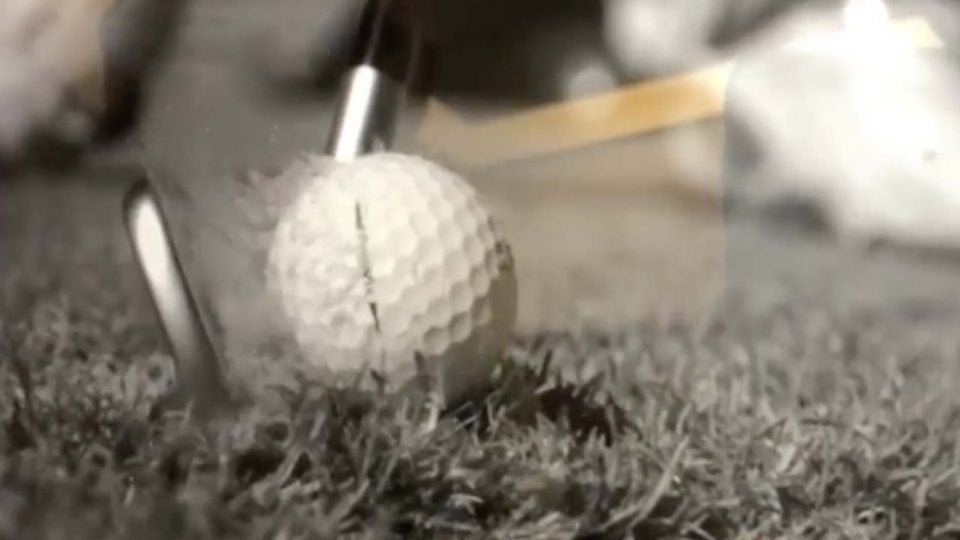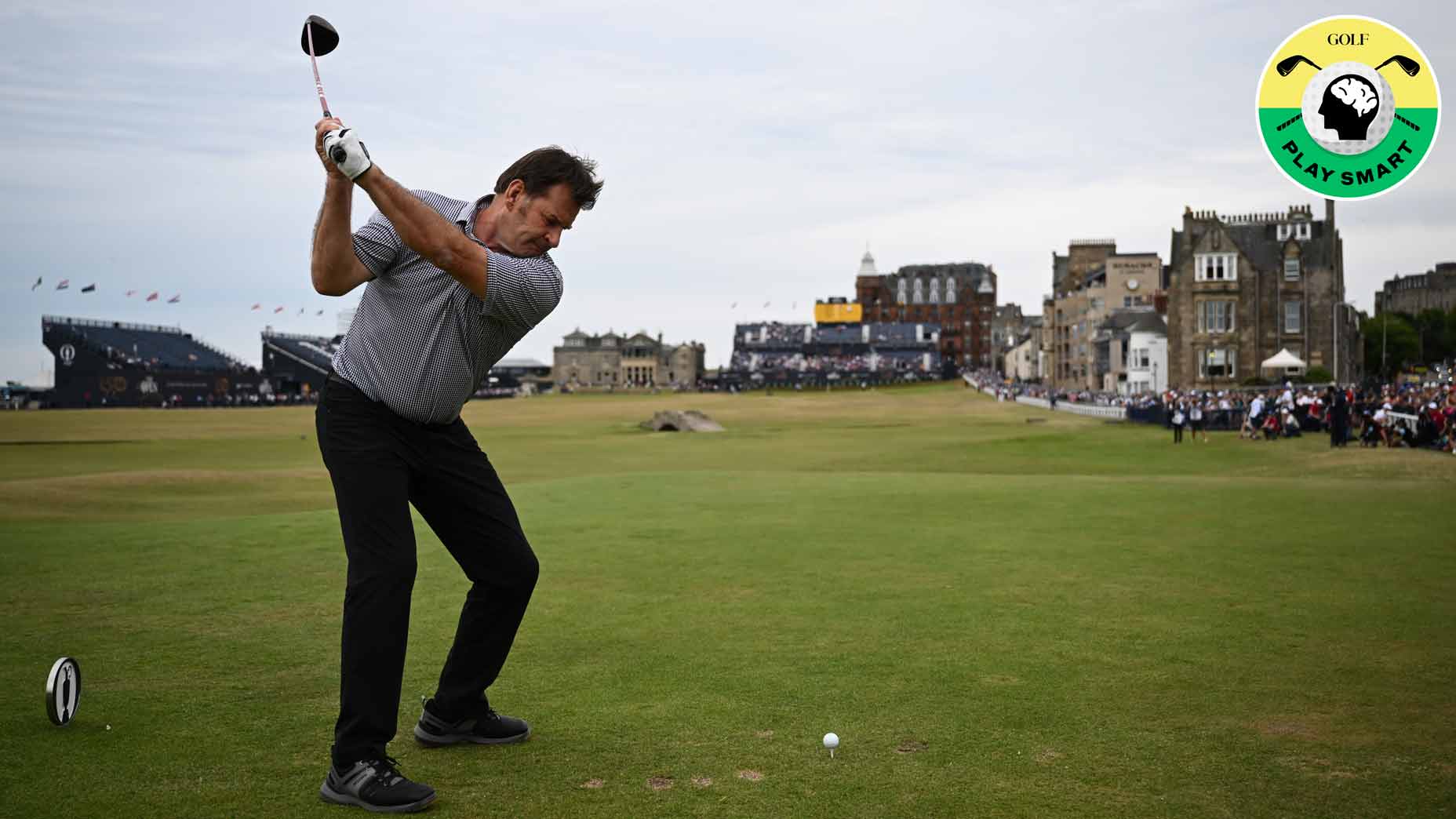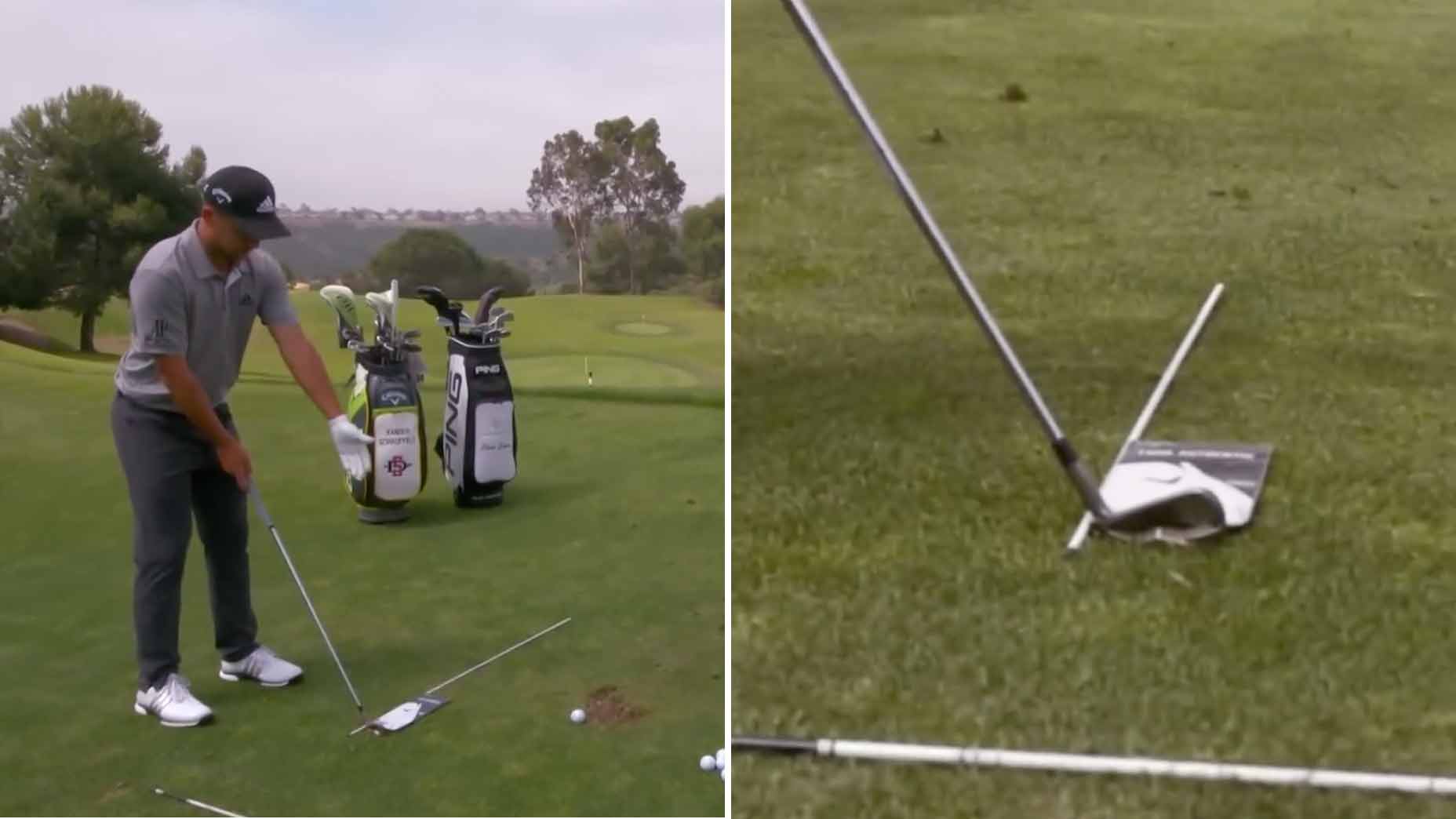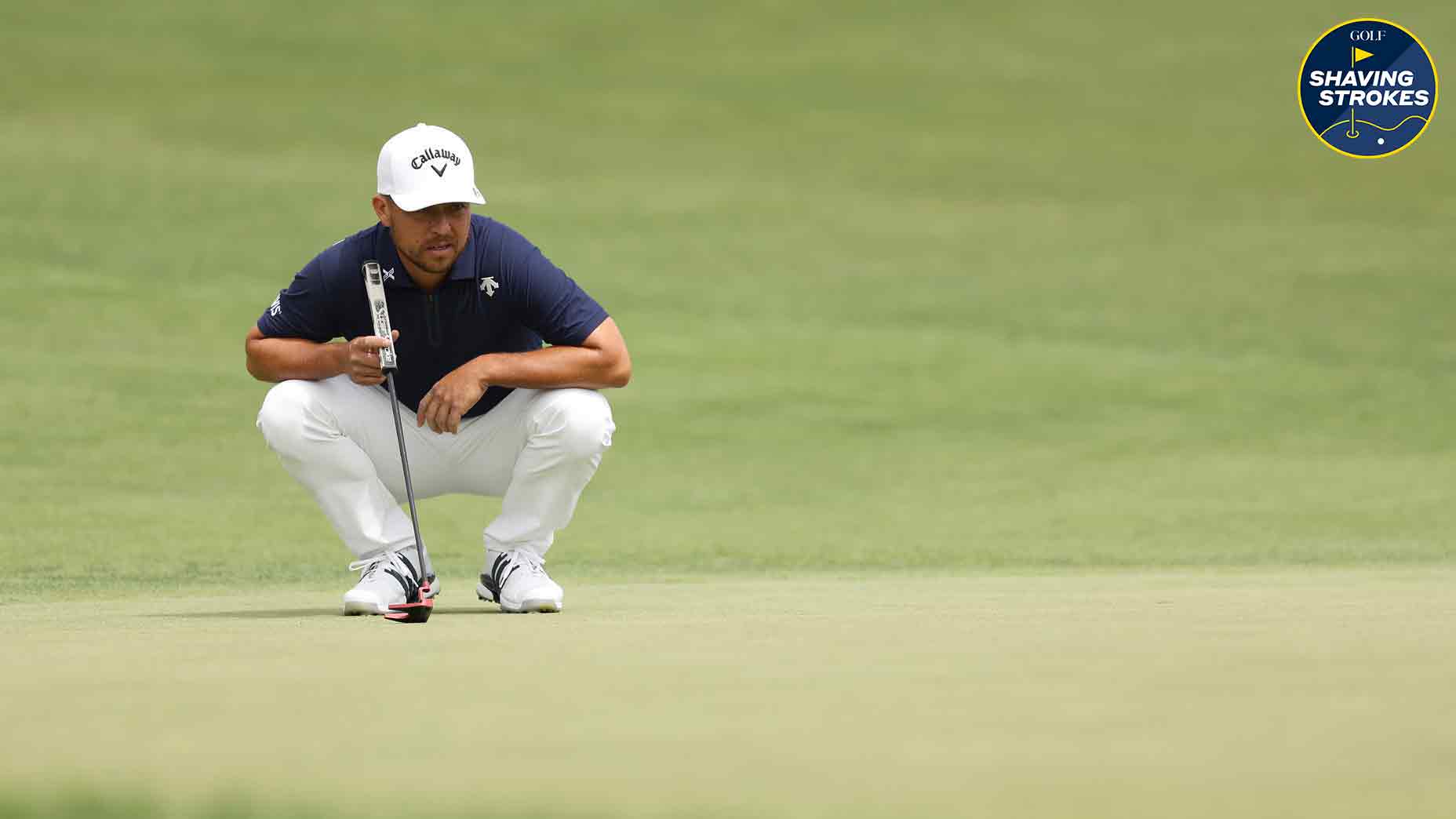 This updated alignment trick will perfectly dial in your aim
This updated alignment trick will perfectly dial in your aim
2 amazing videos show why you should always clean your clubface

For some, golf is an art. Think Bubba Watson. Nothing too technical, just a guy who feels his way around the course. For others, it’s a science. The obvious example is Bryson DeChambeau (I mean, his nickname is literally the mad scientist); a player who breaks everything down in the most technical sense. There is no right or wrong, and most players fall in the spectrum between these two extremes.
But no matter where you stand on the art-to-science scale, there are certain instances where the science prevails. One example is when it comes to how water on the club or ball affects your ball flight. A couple of years ago, DeChambeau experimented with this on the range by spritzing his balls with water before hitting them to see how they reacted. It was a bit unorthodox, but the data behind it is solid.
Hitting a wet, slippery ball always seems to make the ball harder to control. The reason for this is that when the club and the ball are dry, it is easier to create friction between the two, which in turn produces spin. Take away that friction and the ball spins less.
This was covered in a recent article from GOLF’s instruction editor Luke Kerr-Dineen. Here’s an excerpt summarizing data from GOLF Top 100 Teacher Andrew Rice:
A dry golf ball takes off with less height and more spin.
Wet club and dry ball:
Launch angle was 27.8 degrees
Spin rate was 5,463 rpm
Height was 26.5 feet
Dry club and wet ball:
Launch angle was 30.1 degrees
Spin rate was 5,291 rpm
Height was 28.4 feet
Dry club and dry ball:
Launch angle was 25.4 degrees
Spin rate was 6,603 rpm
Height was 21.2 feet
If you’re more of a visual learner, this phenomenon was also illustrated in the two videos below, one from GOLF Top 100 Teacher Chris Como, and the other from the USGA’s Research Department.
https://www.instagram.com/p/BoKi8BVAdJH/
Love it, love it, love it... pic.twitter.com/A2YWkqWvzb
— Michael Finney (@mfinneygolf) April 2, 2020
It’s one thing to read the numbers on how moisture affects the golf ball, but seeing it in action gives it even more weight. Another interesting component in this equation is how this spin rate is affected depending on the loft of the club. This was explained in a chart on Twitter from Erik Henrikson, PING’s Director of Innovation and Testing.
ADVERTISEMENT
Have had a couple people ask about the spin loft where wet/grassy conditions start to spin more for longer irons rather than less. Around 35*. I believe Lieberman was the first to publish something on this in the early 90’s. 1st WSCG (@GolfScience). pic.twitter.com/p0l9qZjg6P
— Erik Henrikson (@Ehenrik) April 5, 2020
The results are fascinating and indicate that when you get to around 35 degrees of loft (roughly a 7-iron) the moisture on the ball starts making the ball spin more rather than less. Essentially this shows that you still have less control on the ball with lower lofted clubs. With shorter clubs, you want more spin to control the ball, but on longer clubs you want less spin to have a better chance of controlling the ball.
So what’s the biggest takeaway from all of this? Always clean your grooves and do everything you can to make sure your club is dry before hitting. It’s sure to save you some strokes throughout the round.
To receive GOLF’s all-new newsletters, subscribe for free here.
ADVERTISEMENT






